Five on Friday: Things we used to use coins for
In our regular light-hearted look at what has been making the headlines, Ramesh William remembers when coins were actually valued.
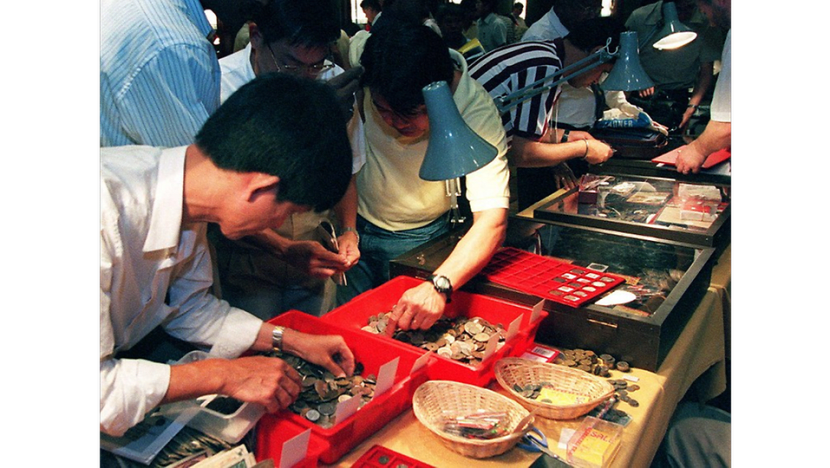
Coin collectors look through old coins on sale at the 13th Singapore International Coin Show and Collectibles Fair on Mar 5, 1999. (Photo: AFP/Roslan RAHMAN)
SINGAPORE: So it’s come to this. Having already lost its shimmer in a time of dongles, payWaves and polymer notes, the use of coins could be regulated.
Not that its use is not already limited. Try paying for stuff outside of the post office with five-cent coins or (gasp!) a one-cent coin and you get a dirty look.
If you have shares in kilns that make piggy banks, it is best that you unload them now. Like, now-now.
While you can always toss your spare change into coin deposit machines or make payment at supermarket self-checkouts, who knows when these too would be subject to limits on certain denominations.
As we rush headlong, falling over one another, to unload our spare change into the SPCA dog, here is a look back at what we used to use coins for.
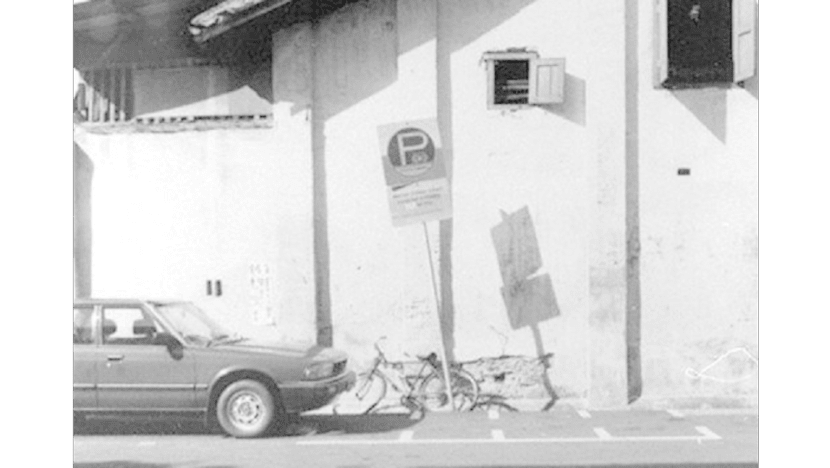
Parking back in the day. (Photo: National Archives of Singapore)
Believe it or not, there was a time before the ubiquity of the in-vehicle unit in Singapore. In that bygone era, we still had to cough up for parking in office buildings and at shopping centres (no one said “mall” before the 1990s).
When you entered the said parking space, you would press some fiddly contraption for a ticket which you would then hand over to some bored soul in a booth as you exited. And typically, coins were used for payment.
Cue comedy.
If you were a dude, this was when you would have to resort to some form of wiggly dance to fish shillings out of your pant pocket while being strapped down by the seat belt. If you were a lady, you would be rummaging through your purse like an epileptic loon as the cashier’s stare bore into your temple.
But there was a silver lining. If the line of cars was long, one could throw in the odd Malaysian coin into the mix knowing full well the parking cashier’s priority was to expedite the queue. Not us, though. Others.
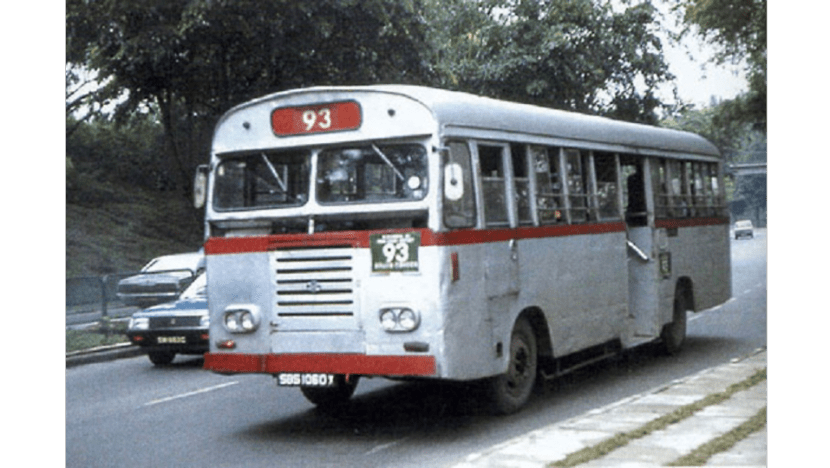
An SBS bus in the 1980s. (Photo: SBS Transit)
Old-timers would be able to regale you with yarns of them lugging coins just about anywhere. And they had to. I mean how else would they have gotten around?
In a time before the sturdy EZ-link card, and before the wobbly TransitLink card, the only way - if you weren’t a bus pass-toting student, that is - to pay for your bus journey was to either dump a bunch of change into a box by the driver (which you can still do to this very day) or hand them over to a bus conductor.
These uniformed bus conductors were a sight to behold with their book of colourful ticket stubs, hole-punchers and change-heavy satchels. The kind of satchels hipsters have now appropriated to carry their calfskin-sleeved passports and monogrammed gin flasks.
Interestingly, and a little beside the point, the whole bussing experience of yore was a pretty noisy affair.
The boneshakers themselves noisily rattled down the road with passengers enduring the overly loud engines and every grating crank of the gear box. And each time more people got on and chucked their fare down the coin box, the cacophony went up another notch. Kid you not, it was an unmitigated racket.
Plus, there was always some random klutz who would spill his change all over the floor of the bus. Oh, good times.
PLUCKING CHIN HAIR
Tweezers were not readily available in the analogue era. There were not any 24-hour Guardian outlets or Watsons to pop down to for your grooming supplies. Also, there were not any metrosexuals back then (or the term at least).
So necessity being the mother of invention and all that, some genius took two 10-cent coins (size matters - five-cent coins would not do) to pluck out stray chin hairs.
Believe it or not, the trend caught on. Back in the day, you would see people of all ages tending to their scrimpy facial hair with gusto in (sadly) public.
This deft art has not totally disappeared. Men of a certain vintage can still be seen shooting the breeze together at the void-deck with the afternoon papers, the odd community cat and a handful of coins.
Depending on the languorousness of the afternoon, this activity is usually followed up by a spot of toenail clipping.
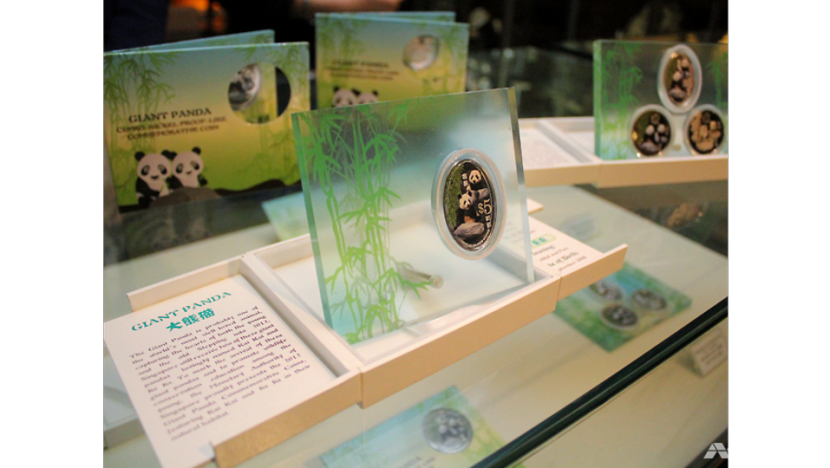
Panda-themed coins, which were produced to commemorate Jia Jia and Kai Kai's arrival in Singapore in 2012. (Photo: Hester Tan)
Not everyone has shopkeeper or hawker parents from whom we can learn the ins and outs of subtraction and addition. But there were other ways to learn maths; and whether you learnt it at the knee of your parent, at school or through an “enrichment” centre, coins were almost always involved.
How many 10-cent coins would make a dollar? If this assessment book staple was beyond your computing abilities, your crestfallen parent would make for the coin drawer and rustle up some silver to show how the numbers totted up.
Not an ideal way to spend time, but it was nonetheless effective.
One time, our art teacher told each of us to bring a dollar coin to school. Big money it was in them days. We figured she must be running some extortion racket on the side, so we did as we were told.
But when the next day rolled around, all she did was hand out tracing paper which were then used to tease out Singapore’s Coat of Arms from our dollar coins. The class oohed and ahhed, astonished at our hitherto latent artistic abilities.
MAKING DECISIONS
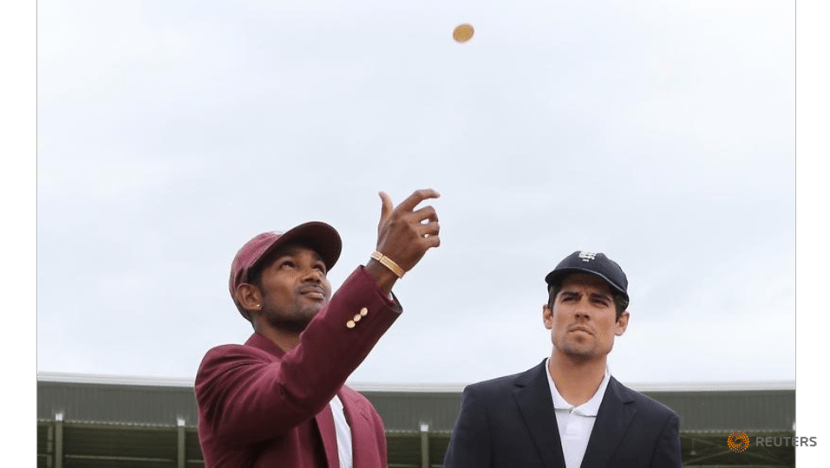
England's Alastair Cook and West Indies' Denesh Ramdin during the coin toss before their second test at the National Cricket Ground, Grenada on Apr 21, 2015. (Photo: Action Images via Reuters/Jason O'Brien)
The coin toss remains a big part of sport. In football, tennis and cricket, it decides who kicks off, serves, or bats or bowls first. In golf, a coin is used to mark the position of your ball on the green.
And for many, it remains a way forward when faced with the proverbial fork in the road. "Heads Punggol BTO flat; tails Hougang resale flat," some no doubt would have cried as the coin hung in the air.
And why not? It is an efficient way at arriving at a decision, ceteris paribus.
And when you do get that flat, you will need that coin to deal with the myriad of options your contractor is going to saddle you with. Ceramic or stone? White or off white? Sloped or raised?
So long as first-time homeowners exist, we think there will be no reason for the humble coin to go gently into that good night.










